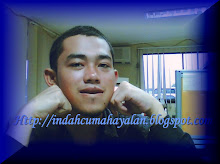Wednesday, December 16, 2009
Peyronie’s Disease
Peyronie’s disease was discovered in the 18th century by a French surgeon of the same name. It is characterised by the formation of a hard, fibrous layer called plaque under the skin on one side of Mr P.
The fibrosis starts out as inflammation, but can lead to scarring and a severe bend in Mr P. Mr P may bend sharply when erect.
Sometime Peyronie’s affects both sides of the penis, causing indentation and shortening. The hardening and scarring can lead to painful erections and make intercourse painful and difficult.
The cause of Peyronie’s is thought to be injury to the walls of the internal cavity of Mr P. This leads to bleeding and sometimes scar tissue formation. The scar tissue is inflexible and tight, and sits in the shaft of the Mr P as a hard knot, causing the penis to bend.
If the damage occurs when young the bend may be more severe, since the plaque build up affects normal growth of Mr P.
It is estimated that as many as 1% of men are affected with Peyronie’s disease. It is not difficult to detect, and an examination of the area at the base of the curvature will show whether or not a person has Peyronie’s or natural curvature of the penis.
Surgery is offered by some institutions as a remedy for the disease. The process is similar to that of fat addition surgery to extend Mr P. Any such incisions are dangerous, and all penile surgery should be very carefully considered before it is decided upon.
Only in very severe cases of Peyronie’s disease should such an option be considered.
An incision is made near the offending plaque, and the section of the penis that has scarred is typically removed. This may simply delay the problem, however for the removal of the tissue may actually lead to more scarring and the disease may replicate itself in a more severe form after the original deposit has been disposed of.
Mr P enlargement techniques can be effective in cases of Peyronie’s disease. By increasing the size of Mr P naturally, one may be able to even out the sides of Mr P, with a natural correction for the side affected by Peyronie’s disease.
There are documented cases of men who were able to correct severe curvatures through natural Mr P enlargement.
While these methods do not actually get rid of the deposits, they can aid in intercourse and take away much of the pain involved with Peyronie’s by straightening out Mr P significantly.
Note:
These exercises can be used for ANY bend in the Mr P. If your Mr P bends downwards or upwards, you should use the same principle and bend away from the curve.
Be more cautious when bending up or down significantly, since the bend may cause pain due to manipulation of the urethra. Do not overdo your up or down ward bending.
Bending against the curve:
In order to effectively combat Peyronie’s you must stimulate the area surrounding the plaque deposit, which is the cause of this disorder.
The plaque deposit stunts the tissue growth and can actually decrease length and curve Mr P significantly, regardless of whether the male has passed the pubescent stage.
While it is not possible to remove the deposit itself with techniques other than surgery (which is ONLY to be used in the most severe cases) it is possible to get blood moving freely through the areas surrounding the deposit, and correct some of the curvature.
When bending against the curve, there are a couple of possibilities.
First, as you may have gathered, you must bend against the curve. This means that if your Mr P curves to the left, you must bend the head to the right, so that the outbound bend contains the plaque deposit.
Be careful, however and do not bend far enough to cause yourself pain.
As you bend against the deposit you may fell a tightness in the skin. This is normal, but do not bend past the point of tightness.
You need to be aware of how your Mr P feels. A good way to gauge this is to put your fingers near the deposit ( or your best estimate of where it is) and feel it to make sure you are not aggravating the area.
If you notice any swelling or soreness, do not do the Peyronie’s exercises for 1 to 2 days until swelling and soreness disappear.
You are working with a sensitive area, so you must take great amounts of care not to damage yourself any further.
The exercise:
1) Find a private spot wherever you are: work, home or public.... it doesn’t matter. It is better to do this exercise with lubrication such as Vaseline, massage oil, hand crème or some other agent that will prevent you rubbing your skin too severely.
Sit down and try to keep your back as erect as possible. Gravity will push more blood into your lower abdomen and pelvis.... which is never a bad thing in this exercise.
Leaning back is OK as well. The most important thing is that you are comfortable. Take your Mr P in your hand:
2) Begin to stroke your penis, using only your thumb and forefinger in a ring, pulling the skin slightly but not painfully.
When you move back towards your body lighten the pressure and do not squeeze as hard, but move your hand quickly and begin pressure right at the base of Mr P.
The result is to be moving the blood forward as fast as possible to the tip of Mr P and to be stimulating the ring around the head of Mr P (which is the most sensitive part).
This will not feel as good as using your whole hand to stroke yourself, but do not be tempted to use your whole hand as you will want to get used to the pressure stimulation, which will move the blood more effectively.
3) As you become erect continue to stroke yourself, squeezing harder against the oncoming pressure of the blood.
This should prolong the time it takes to get a full erection and you will feel the pressure of the blood against the skin of your Mr P.
Continue to work the blood down into the head, milking Mr P.
Once you reach a full erection move your hand back to the base of Mr P and hold it there. You are containing the blood in Mr P and causing it to stretch very gradually.
4) With your free hand tug gently on your penis, pulling it left then right then straight out. Do this three times in succession before switching direction.
The fully erect state is the state in which it is best to stretch your Mr P because your skin is at its maximum tension for the amount of blood that is in it.
As you stretch the skin will slowly expand; making your Mr P larger and giving it a larger capacity.
5) Do each direction three times, making a total of 9 stretches in each direction. Wait a few seconds and then release the hand at the base of your Mr P. You will be able to feel the blood flow pick up again.
At any point in this exercise if your Mr P starts to hurt or you feel numb in any part of your body then release your grip on your Mr P immediately. You do not want to do any damage.... only increase your size.
6) After you have released your grip and the blood begins to flow again continue your earlier stroking with thumb and forefinger. However, do not pass over the sensitive head of Mr P.... and stroke only the shaft.
This is also an exercise in control, since you will have stroked yourself to a full erection and not ejaculated. You want to calm yourself down with this stroke, and not concentrate on sexual images or thoughts.
Eventually, you should lose your erection entirely, at which point you should repeat the stretching exercise in step 4 just one time when you are not erect; stretching to the point of tightness but not actual pain.
7) When you have completed this step you can shake your Mr P out, loosening the skin again preventing soreness from the stretching.
8) Stand up slowly – allowing the blood to run back into your legs and lower body. If you feel faint hold on to a wall or some support so as not to fall over and injure yourself.
This entire should take no more than 1-2 minutes.
Work the tissue:
One possible variation on the above exercise is to “work the tissue”, or attempt to stimulate the deposit directly – increasing blood flow to the surrounding area.
You do this by bending Mr P as in the above Peyronie’s exercise. But you also use the index finger of your “base hand” or the hand closest to the base of the penis or the thumb of your other hand to massage the area surrounding the deposit.
When you are bending away from your deposit use any finger or fingers that will reach to the area of the deposit, and while holding your Mr P in a gentle bend rub the area of the deposit in a circular motion.
Press down slightly and increase pressure to the point where you feel the deposit or feel the tight tissue of the bend. Do not increase pressure past this point – you are merely trying to move blood to the area.
Hold your ‘bend’ for around 15 seconds, rubbing the deposit the entire time. Drop your Mr P back down into the start position and rest for 10 seconds. Take your Mr P in your hand and shake it somewhat to keep circulation going.
If you begin to lose your erection take this time to stroke yourself back to an erection. You should repeat this process in the non-erect state, as suggested in the exercise.
In total, you should do the same number of sets as the regular exercise, but they will all be in the direction against your deposit or Peyronie’s curvature.
This means that you will do 9 stretches all in the direction against your deposit, and 9 more in the flaccid state.
You should begin to notice your curvature dissipate within one to two weeks as long as this exercise is done in addition to normal workouts (approximately three to five days per week).


.png)





























0 Comments:
Post a Comment